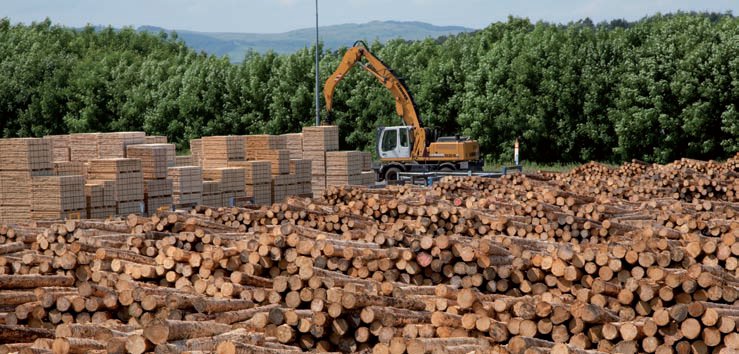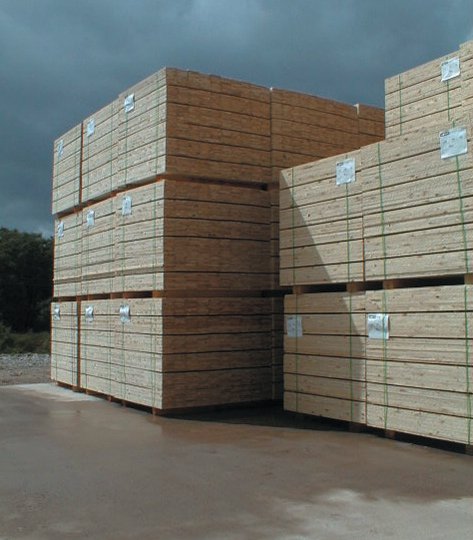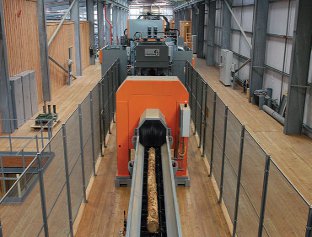Spring upturn still a long way off for British mills
23 March 2013British mills haven’t had the same flying start to the year they enjoyed in 2012 and demand is steady but slow. Sally Spencer reports
British sawmillers hoping for a repeat of the early storms that kick-started the fencing season in 2012 have been sorely disappointed. In fact the inclement weather at the start of this year has had the reverse effect of hobbling demand, which has still to get going despite Easter being just next week.
The dumps of snow in the new year also caused some logistical problems in terms of access to logs, with some processors reporting a few "hand to mouth" days when the mills' cutting was outstripping roundwood supply.
That situation has eased and there are no issues with log availability - only with log price.
"There is massive expectation there [among the growers] that prices should remain high," said one major sawmiller. "There has been some softening in certain areas but that is mainly because demand has reduced."
Private growers are content to bide their time rather than drop their prices, said another. "They know we'll take production out in November but they also know it will be coming back on in March, so they know they can leave it growing for a while," he said.
And, said a fencing and pallet sawmiller, while the larger, carcassing-oriented mills may resent the high log prices, the fact that their production is filling a gap left by imports of Nordic carcassing material, means they are better able to cope with the high log costs.
His mill, he added, had failed to secure any logs at a recent auction. "Our log stock is good and demand isn't where it should be so we tried to reduce the price. We didn't even get negotiating rights." Though not exceptional, demand for sawn timber is steady enough that British mills are now looking to increase their selling prices in the second quarter in order to offset log prices somewhat. And rumours that Nordic prices are set to rise could be just the justification the home-grown sector needs.
The price differential between Britishgrown and Scandinavian timber is already between £15-25/m3, depending on grade and "whom you talk to" and a further hike from the beleaguered shippers could increase the gap to as much as £40/m3.
So it seems it's not a question of when British timber prices increase but by how much and which mill will jump first - and the delicate state of the market is causing some twitchiness.
"If Swedish timber moves up by £20/m3 then everyone will get some degree of drag up but it's being offset by the lack of activity [in the market]," said a sawmiller. If there had been any "buzz" in demand in February he'd be more likely to put a figure on a price rise, he said, but he's not sure how much can be passed on.
"We'll probably have to sit on our hands for a couple of weeks and then we hope the pattern will be a little clearer," he said.
"I haven't made up my mind whether we increase our prices yet," said another sawmiller. "I'll watch the market closely and remain loyal to customers who are loyal to us."
British mills are busy but they are largely cutting to demand and are carefully managing their output to prevent a large build-up of sawn timber stocks. None is contemplating putting on extra shifts or increasing capacity - a frustration for those super mills that have invested in the extra muscle. James Jones & Sons, for example, is targeting an 8-9% increase in production this year and BSW Timber's new K2 line at its Fort William mill is ready to cut in earnest (see p6).
As long ago as the last market report in November (TTJ November 24/December 1, 2012) contacts were citing Easter as the potential turnaround time for fencing timber demand but, as it approaches, the long weekend is proving to be less than inspiring.
There have been some pockets of increased demand in southern England, particularly in agricultural fencing, with domestic fencing typified by "short time buying and an unwillingness in the supply chain to be caught holding stock", said a Confor spokesperson.
Demand has just started to pick up a little in the north, he said, but the situation in Wales is worse. "Grants for agricultural fencing in Wales have been cut back and that has depressed the market," he said.
Some customers have pre-empted any Easter rush by building their stocks but their inventories are still thought to be very low. "They're not stocking as much as they should be," said a fencing specialist. "This time last year we were on a double shift, which we ran until May. We've no plans to put a double shift on now."
Benefits of incising Those mills that have installed incising equipment are beginning to feel the benefit, although this season will be the true test. "Our [incising] machine is working flat out," said a contact. "Some of the nationals are taking it across their estate and the volumes are building quite nicely. For Use Class 4 posts it will be the only way forward."
"The British Standards committee has the view that incising is probably the only means of attaining a 30-year desired service life," said the UK Forest Products Association. "But investing in incising equipment is expensive and a lot of people are standing on the sidelines and waiting to see what will happen [to the market]."
Pallet timber business reflects the general depressed state of both the construction and manufacturing sectors but is relatively steady.
"We're clearing everything we produce and have a lot less 'problematic' stock than we had two months ago," said a contact. "We're probably about where we would expect to be."
"It's been pretty stable," agreed another. "The prices are subdued but overall we have steady volumes going out."
The market for construction timber is universally acknowledged to be lacklustre but, here again, reasonable volumes are being despatched - just not as much as the heavyweight producers would like.
"They are just steady base volumes," said one. "CLS seems to be pretty steady for us." But, he added, with all the processing tools at his disposal and a solid supply chain, his mills "should be flying by now."
"As an industrialist it's very frustrating," he said. "There is a massive shortage [of housing]; the government has to get planning regulation sorted out and get people building." A fellow producer reported that carcassing volumes were similar this quarter to the same period last year but that the product range had had to be broadened.
"We've had to be more diverse in our product range in order to sell more volume," he said. "There is a lot more ungraded and unseasoned coming into the mix because customers are trying to get their average price down."
Co-products are finding a ready market, with a rush for shavings, thanks to the wet weather. Bark is more problematic, however, with quality becoming an issue. "Good quality bark finds a home easily but lower quality bark is seeing competition from local authorities' composting," said the UKFPA.
Looking forward there is hope rather than expectation that business will pick up at Easter.
Longer term there is no talk of a significant upturn in fortunes until economic recovery, which most believe will be 2014 at the earliest. In the meantime the sector remains in a positive mood, ranging from quiet confidence to downright bullishness.
"We've picked up 46 new accounts since January - not on price but because we're improving our service and our range," said a contact.
"I think that demand could pick up on the back of a shortage of imports," said another. And, he cautioned, with British mills now finding attractive export markets, such as China, Dubai and Egypt, the diversion of "significant volumes" overseas could even result in shortages here. And shortages that could not be filled by the currently dwindling Scandinavian imports, he said.
"It has got to be a signal to the UK market that there are alternatives," he said. "If they don't want to buy it we'll take it elsewhere."


